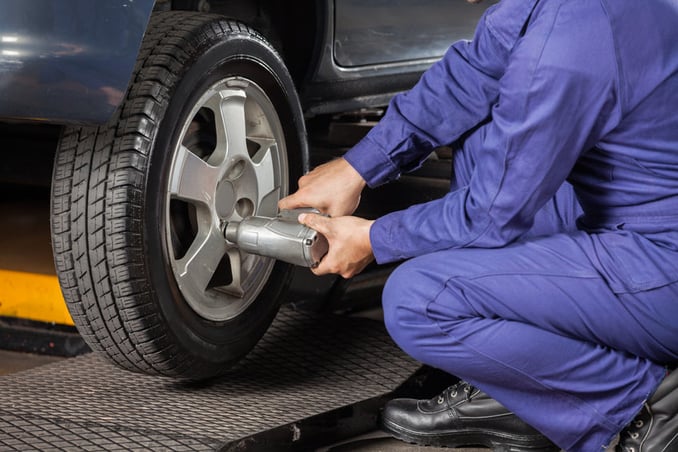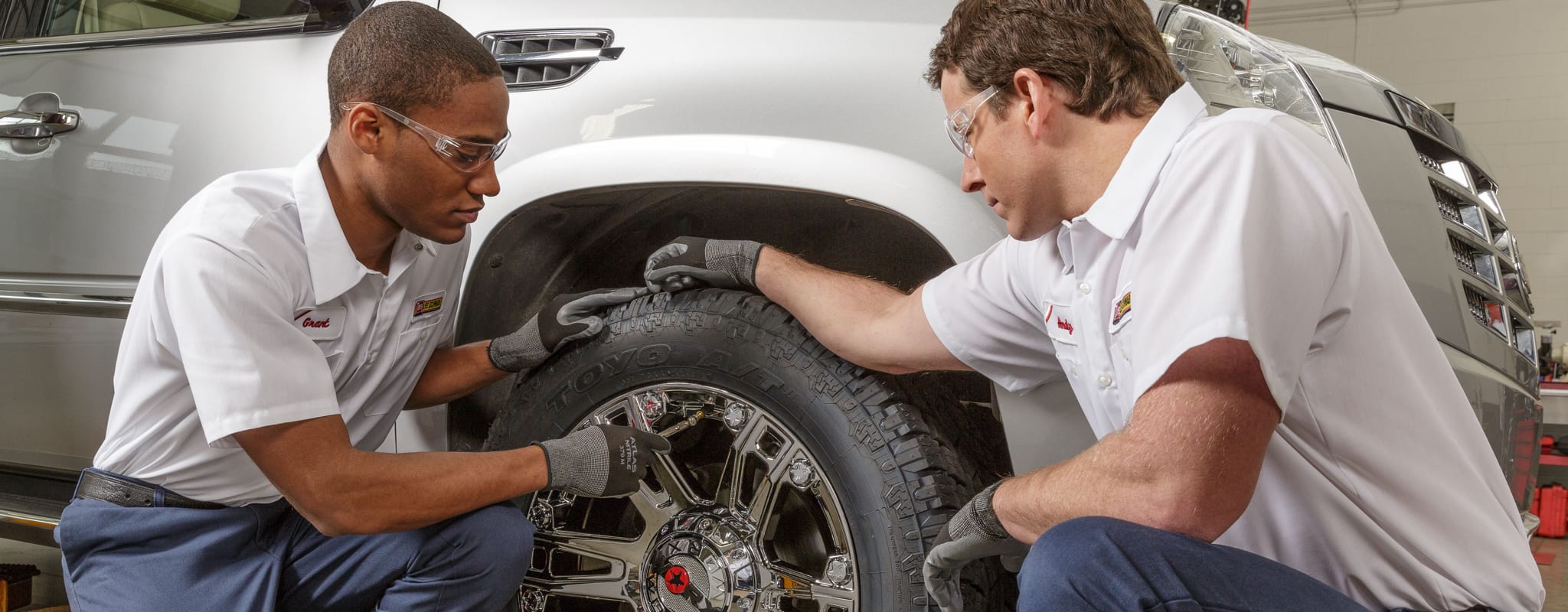Specialist Guide to Tire Repair Service: Everything You Need to Know
In this extensive overview, we will untangle the intricacies of tire fixing, losing light on the numerous kinds of fixing sets available and offering important insights into when it could be time to bid goodbye to a damaged tire. Remain tuned as we dive much deeper right into the nuances of tire upkeep, equipping you with the crucial expertise to guarantee your tires stand the examination of time.
Common Reasons of Tire Damage
What are the typical reasons that lead to tire damages, influencing car performance and security? Tire damages can take place due to different elements, with one of the main factors being improper rising cost of living pressure.

An additional usual source of tire damage is inadequate tread depth. Worn-out treads can jeopardize hold when driving, specifically in damp or unsafe problems, increasing the risk of crashes. Additionally, driving over holes, debris, or sharp objects can puncture or cause cuts in the tire, deteriorating its framework and potentially triggering a flat.
Additionally, inappropriate wheel positioning and unbalanced tires can also add to tire damages. Misaligned wheels can bring about irregular wear patterns, while out of balance tires can cause resonances, influencing both the lorry's handling and the tire's durability. Routine maintenance checks and prompt repairs can aid minimize these usual sources of tire damage, ensuring optimum lorry performance and security.
Kinds Of Tire Repair Kits
To resolve the aftermath of usual root causes of tire damage discussed previously, it is necessary to recognize the various sorts of tire repair packages offered for vehicle owners. There are primarily 3 kinds of tire repair work packages frequently used: plug kits, spot kits, and mix repair work kits.
Spot sets, on the various other hand, are more ideal for larger leaks or cuts in the tire. These packages include a patch and glue material that is used to the internal lining of the tire to cover the broken location securely.
Combination repair sets supply the advantage of having both plug and patch elements, providing a detailed solution for a selection of tire damage circumstances. It is essential for car proprietors to acquaint themselves with these different sorts of tire fixing packages to be planned for any unforeseen tire problems on the roadway.

Steps to Fix a Tire Puncture
Repairing a tire slit calls for a systematic technique and the right devices to ensure a secure and reliable solution. When faced with a punctured tire, the very first step is to safely pull over to a level, stable surface away from web traffic. Involve the auto parking read brake and place wheel chocks behind the tires to avoid any type of unintended rolling. Next off, remove the pierced tire following the car maker's standards. As soon as the tire is gotten rid of, evaluate the punctured location to find the international item triggering the leak. Utilize a reaming tool to clean and roughen the puncture opening for far better attachment. Apply rubber concrete to the area and place a plug utilizing a plug insertion tool. Trim any excess plug material flush with the tire step. Lastly, reinflate the tire to the suggested stress and reinstall it onto the lorry. Conduct a thorough leakage check making use of soapy water to make certain the slit is successfully sealed before resuming normal driving.
When to Change a Tire
Establishing the proper time for tire replacement necessitates a comprehensive analysis of numerous essential variables associated with tire wear and security. One vital element to think about is the walk deepness. As tires put on down, the deepness of the step decreases, influencing the tire's grip when driving. Most specialists recommend changing tires when the walk deepness reaches 2/32 of an inch to maintain optimal grip (discount tires morris il). Additionally, inspecting the tire for any kind of indicators of damage such as cuts, bulges, or splits is moved here important. These issues can jeopardize the structural stability of the tire, increasing the risk of a blowout. Age is an additional significant consider tire substitute. Even if the tread deepness shows up adequate, tires older than six years must be carefully examined, as the rubber can deteriorate gradually, making the tire much more vulnerable to failing. Routinely examining these variables and consulting with a professional can assist figure out when it's time to change a tire for optimum safety and security when driving.

Tire Upkeep Tips for Longevity
After examining essential variables connected to tire wear and security, implementing proper tire upkeep methods is essential for maximizing the longevity of your tires. Frequently checking tire pressure is critical, as underinflated tires can cause boosted wear and reduced gas effectiveness. It is advised to inspect tire stress at the very least once a month and previously long journeys. In addition, maintaining appropriate wheel positioning and equilibrium can assist extend the life-span of your tires. Misaligned wheels can cause unequal wear, while out of balance wheels can result in resonances and premature tire wear.
Revolving your tires at regular intervals, typically every 5,000 to 7,000 miles, promotes also walk wear throughout all tires. Inspecting tires for indications of damage, such as cuts, protrudes, or punctures, is likewise critical for maintaining tire long life. By adhering to these tire upkeep ideas, you can make best use of the lifespan of your tires and guarantee a smooth driving experience.
Verdict
In verdict, comprehending typical reasons of tire damages, using the suitable tire repair packages, complying with appropriate actions to fix check this a tire leak, knowing when to change a tire, and carrying out tire maintenance tips are crucial for optimizing the longevity of your tires. By staying notified and positive in addressing tire issues, you can make certain safety and security on the roadway and lengthen the life expectancy of your tires.